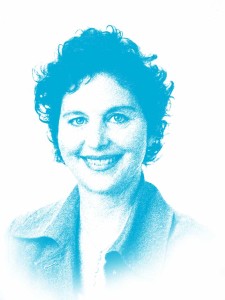Chances are you own or have owned a mutual fund at some time. But do you know how much you are paying for your funds? Because you don’t usually see what fees you are paying on your statement, it’s easy to ignore the issue of fees. Turns out most other Canadians are doing the same thing.
According to Garth Rustand of Investor’s Aid Inc., Canadians are very passive when it comes to fees and we consistently pay the highest fees for mutual funds of any industrialized country – apparently we pay as much as 60% more than in the US and 200% more than in Europe – yikes! Are we getting our money’s worth? Pretty hard to tell unless you understand some of the industry lingo and what goes into the mutual fund fee calculation.
Take “management fees” and “management expense ratios”. It’s a common mistake for investors to use the terms interchangeably, but they are definitely not the same.
Simply put, management fees represent the payment to fund managers for selecting the investments to include in the fund and are only one component of the overall fees you are charged. The number that you should really be interested in is the management expense ratio or MER.
The MER includes the management fees plus other “indirect” costs such as: fund administration charges, legal, audit, custodian fees and transfer agent fees, advertising and marketing expenses and GST. It can also include sales commissions and ongoing trailer fees that are paid to your financial advisors for selling you the funds.
And just how much of a difference is there between the two charges? Let’s look at an example. Fidelity offers a Large Cap Canadian mutual fund with a management fee of 2.00%. After adding in all the other charges, the MER comes out at 2.47%.
So where does the MER show up in your fund? Because the MER is embedded in the published rate of return you don’t really see it, but it’s there if you look closer. If the above mentioned mutual fund had an annual rate of return of 5.3%, this means that the investments actually yielded a return of 8% but then expenses of 2.47% were subtracted.
If you are comparison shopping this is the main number that you will need to compare – the rate of return after all expenses are deducted. MER information is published in the prospectus that you are given when you buy a mutual fund and can also be found on mutual fund info websites like globefund.com and morningstar.ca or by asking your advisor.
When comparing MERs from one fund to another make sure that you are comparing apples to apples. Typically management expenses ratios are highest for the specialty stock mutual funds and lowest for money market funds. Bond and balanced fund fall somewhere in the middle. Don’t try to compare the MER from one fund to another if the underlying investments are from different asset classes.
Because the MER can include commissions and trailer fees paid to the advisor channel, “load” funds typically have higher MERs than bank funds or “factory direct” mutual funds. Some of the better know mutual funds companies like Mackenzie, Fidelity, CI and Templeton are load funds offered through financial planners and investment advisors
“Factory direct” funds like those offered by Phillips Hager and North, Leith Wheeler, Mawer, or Steadyhand to name a few, often have lower MERs because they sell their funds directly to the investor through their own advisors.
Should you always go for the lowest MER funds? Of course it’s better to keep more in your pocket, but you also have to weigh out the value of advice. If your advisor is giving you great service and top notch financial planning and investment advice, then as long as you know what you’re paying for and see value, don’t fix what ain’t broke. If not, it might be time to explore some of the lower expense investment options. – Karin Mizgala
Karin Mizgala is a Vancouver-based fee-only financial planner with an MBA and a degree in psychology. She’s the President of LifeDesign Financial and co-founder of the Women’s Financial Learning Centre.

 But what we have to remember is that markets always have their ups and downs. Easier said than done I know, but it’s best not to succumb to emotion or panic selling.
But what we have to remember is that markets always have their ups and downs. Easier said than done I know, but it’s best not to succumb to emotion or panic selling.

